The King Mongkut Studies Initiative
Krom Luang Samorratana Sirichet
Prince Somawadi Siri Ratana Rachida, Krom Luang Samorratana Sirichet
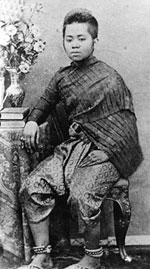
Her Royal Highness Princess Somawadi Siriratana Rajadhida
Image courtesy of: National Archives of Thailand
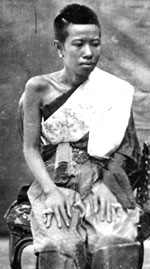
Chao Chom Manda Thiang, Royal Principal Consort
Image from: Prachum Phap Prawattisat Phaendin Somdet Phra Chom Klao Chao Yu Hua (Historical Photographic Collection of King Mongkut’s Reign)
กรุงเทพฯ : กรมศิลปากร, ๒๕๔๘. หน้า ๓๙.
Her Royal Highness Princess Somawadi Sirirattanaratchadida, Krom Luang Samorrattanasirichet
Her Royal Highness Princess Somawadi Sirirattanaratchadida, titled Krom Luang Samorrattanasirichet, was the royal daughter (Phra Chao Luk Thoe) of King Mongkut (Rama IV) and Chao Chom Manda Thiang, born in the early part of his reign. She was born on Friday, the 8th waxing day of the first lunar month, Year of the Rat, Chattawasok, in the Chulasakkarat era 1214, which corresponds to November 19, 1852 (B.E. 2395).
Within the royal court, she was affectionately referred to as “Phra Ong Yai Som” or simply “Phra Ong Yai”. She had nine siblings—younger brothers and sisters—who shared the same mother.
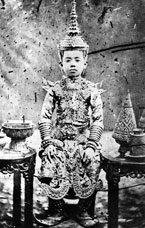
Her Royal Highness Princess Somawadi
Image courtesy of: National Archives of Thailand
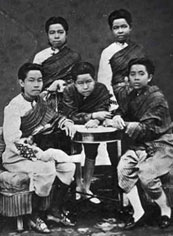
Prince Samorrattanasiritchet (seated, far right)
Image courtesy of: National Archives of Thailand
In the year 2446 B.E. (1903 CE), during the Royal Coronation Ceremony (Chatr Mongkhon), which marked twice the length of reign of King Chulalongkorn (Rama V) compared to that of King Mongkut (Rama IV), His Majesty King Chulalongkorn reflected on the exceptional qualities of his elder half-sister, Her Royal Highness Princess Somawadi Siri Rattanaratchathewi. She was a royal daughter greatly cherished by King Mongkut, who favored her more than others due to her keen intelligence, compassionate nature, and capability in court affairs. She had shown exemplary dedication in supervising internal palace matters, upholding royal customs, and assisting in both traditional and modern royal duties with great loyalty and diligence. In recognition of her service and character, King Chulalongkorn issued a royal decree to elevate her status as a Princess of the Front Palace (Krom Luang). Her full title, inscribed in the Royal Gold Inscription (Phra Suphannabat), was “Phra Chao Phi Nang Thoe Krom Luang Samorrattanasiritchet” (พระเจ้าพี่นางเธอ กรมหลวงสมรรัตนสิริเชษฐ) She was also granted a sakdina (feudal rank) of 1,500, which was the customary honor given to high-ranking princesses of her status within the Grand Palace hierarchy.
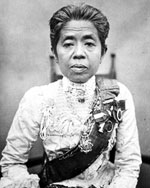
ภาพจาก : หอจดหมายเหตุแห่งชาติ
Her Royal Highness Princess Somawadi Siri Rattanaratchathewi, Princess Samorrattanasiritchet, was one of the longest-living members of the Chakri Dynasty. Throughout the reign of King Vajiravudh (Rama VI), she held the prestigious responsibility of Keeper of the Keys to the Inner Court, a position she maintained until the end of the reign. She may rightfully be called a Princess of Four Reigns, having been born during the reign of King Mongkut (Rama IV) and having lived through to nearly the end of King Prajadhipok’s reign (Rama VII). She bore witness to both times of hardship and prosperity, and she preserved the honor and dignity befitting the title “Siri Chettha” (the noble elder) of King Chulalongkorn (Rama V) with grace and perfection in every respect.
His Majesty King Chulalongkorn graciously bestowed special royal honors upon Her Royal Highness Princess Somawadi Siri Rattanaratchathewi, Princess Samorrattanasiritchet, beyond those conferred on other royal half-sisters. She was granted a large two-storey brick-and-stucco residence built in European architectural style. During royal ceremonies, she held the position of head among the royal daughters from the reign of King Mongkut (Rama IV). Her Royal Highness passed away from old age on May 5, 1931 (B.E. 2474) at 9:05 a.m. at Wang Woradit Palace, at the age of 79. The royal cremation was held at the Royal Crematorium, Wat Thepsirintrawat, in 1932 (B.E. 2475).
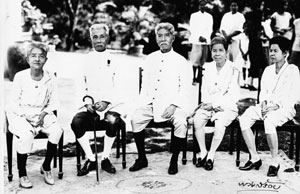
HRH Princess Samorrattanasiritchet (seated, left row)
Image courtesy of: National Archives of Thailand
To honor and express deepest gratitude for the benevolence of His Majesty King Mongkut (King Rama IV)
The reign of King Mongkut marked a period during which Western culture was being integrated to modernize Thai traditions in line with international standards. His Majesty graciously allowed his royal daughters to pursue modern studies and the English language. Furthermore, he provided them opportunities to socialize with foreign men and women. Particularly, the elder princesses were often granted royal permission to accompany him in public functions, such as welcoming foreign guests.
For instance, when Sir Harry St. George Ord, Governor of the Straits Settlements for the British Empire, had an audience with His Majesty during the royal expedition to observe the total solar eclipse at Wako, Prachuap Khiri Khan, in 1868, he recorded the following account:
“The King graciously came out to greet us and introduced us to the inner court officials and the princesses, three in number, about sixteen years of age—Princess Yingyaowalak, Princess Thaksina, and Princess Somawadi. All three were lovely in appearance, save only that they chewed betel. If they did not blacken their teeth in the Siamese custom, they would be counted among the most charming ladies. Their manners were refined, and they could all speak English.”
This corresponds with an account by H.R.H. Princess Poonpisamai Diskul in her book Things I Have Seen, where she wrote:
“Aunt Princess Somrat once told me, ‘I once poured tea for the Westerners at Wako,’ and she laughed as I laughed. Then she added, ‘It’s the Western custom that women serve tea, so I was made to be the one to receive the foreign guests.’”
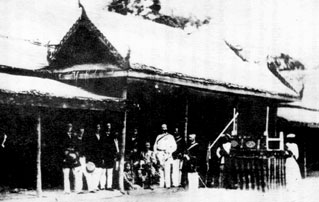
King Mongkut photographed with Sir Harry Ord
Image source: Prachum Phap Prawattisat Phaendin Somdet Phra Chom Klao Chao Yu Hua [A Collection of Historical Photographs of King Mongkut’s Reign]. Bangkok: Fine Arts Department, 2005. p. 106.
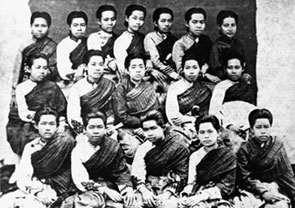
Krom Phra Samoratanasirichet (middle row, 3rd from the left)
Image source: National Archives of Thailand.
Prince Damrong Rajanubhab wrote in Memories that “Some of the royal children were personally selected by King Mongkut to serve him closely and act as royal attendants. This was mostly true for the senior children, such as King Chulalongkorn and Princess Somawadi Sirattanarajadhida, later Krom Luang Samorratanasirichet.”
A passage from Chronicle of the Illness and Passing of King Mongkut by Phraya Bururat Ratanapallop mentioned that Princess Somawadi served by her father’s side until his final breath.
September 23, 1868 (B.E. 2411)
The King entrusted a royal letter to Princess Somawadi, instructing her to bring it out to Anantasamakhom Throne Hall. The letter expressed His Majesty’s wish that senior members of the royal family deliberate and agree upon a suitable successor to the throne—someone intelligent and capable of governing the kingdom.
September 29, 1868
At dusk, the King ordered Princess Yingyaowalak and Princess Somawadi to retrieve the royal regalia from a platform near the royal bed and deliver them to be secured at the Chandrathippayophat Throne Hall.
September 30, 1868
He instructed Princess Somawadi and palace officials to fetch the royal chest of ornaments. From it, he selected a large diamond ring valued at 100 chang and a golden prayer bead set from the reign of King Rama I. These were given to Chao Phraya Si Suriyawongse to be presented to Prince Chulalongkorn at Suan Kulap Palace.
Later, he commanded Princess Yingyaowalak and Princess Somawadi to retrieve more rings from the chest to be gifted to selected princes and princesses.
Upon seeing many of his children gathered near his bed, the King said,
“Mae Nu Yai, Mae Nu Som, go find my rings for distribution—whatever you can find, bring them for your siblings.”
The two princesses returned with diamond, ruby, and emerald rings and distributed one to each of the royal children.
At around 2 a.m., the King told Princess Somawadi to bring two large diamond rings valued at 100 chang. Upon receiving them, he raised his hands in prayer, placed them on his forehead, and made a sacred vow dedicating them as an offering to the Emerald Buddha.
These accounts demonstrate that Princess Somawadi Sirattanarajadhida was deeply loved by King Mongkut and faithfully served him throughout his reign. During his final illness, she was the key liaison between the King, senior princes, ministers, and courtiers, constantly relaying information about his condition. She cared for her father at his bedside until his death.
After King Mongkut’s passing, Princess Somawadi’s status shifted in the new reign. She became an elder royal aunt (“Pa”) to all the royal children of King Chulalongkorn. Highly respected, she played an important advisory and managerial role in palace affairs and the inner court, skillfully handling both traditional and modern royal duties.
Rised and cared for the royal sons of King Rama V.
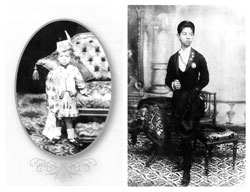
Somdet Phra Boromma Ratcha Pitulathepdi Prince Mahavajirunhis
Image source: Photographic Archives of the Royal Sons and Daughters of King Chulalongkorn: The Crown Prince Lineage. Bangkok: Fine Arts Department, 2009, pp. 44 and 50.
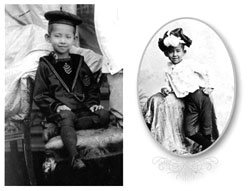
Somdet Phra Mahittalathibet Adulyadej Vikrom Phra Borommarachachanok
(From: Pictorial Chronicle of the Royal Sons and Daughters of King Chulalongkorn: The Youth of the Royal Family, Bangkok: Fine Arts Department, 2009, pp. 64–65.)

From left: Somdet Chaofa Maha Vajirunhis, Somdet Chaofa Mahidol Adulyadej
Source: Faces of History: The Siamese Court, Bangkok: Siam Publishing House, 1973. Page number not indicated.
Princess Somratana Sirichet as Royal Guardian to the Crown Prince
Somdet Phra Chao Borommawong Thoe Krom Phraya Somratana Sirichet was entrusted with the care and upbringing of His Royal Highness Prince Maha Vajirunhis, the first son of King Chulalongkorn (Rama V) and Queen Sri Savarindira, the Queen Grandmother.
In several entries of his personal diary, Prince Vajirunhis fondly mentioned “Pa Som” (Aunt Som), referring to Princess Somratana Sirichet, who was his royal governess. A few excerpts vividly illustrate their affectionate bond:
Wednesday, 29 October 1884 (B.E. 2427)
During a playful moment at the Ang Kaew (a low cement basin with a central fountain located on the ground floor between Chakri Maha Prasat Hall and Sommut Thewarat Uppabat Hall), the young prince was enjoying a boat ride in the shallow waters. Princess Somratana Sirichet accompanied him, attending as his guardian. In a playful turn of events, he wrote:
“Pa Som fell into the Ang Kaew. We laughed heartily…”
It was a joyful occasion shared between the prince and his aunt.
Monday, 10 November 1884 (B.E. 2427)
The prince wrote about an outing to Suan Saranrom (Saranrom Garden):
“We dressed up to accompany Tuol Mom (the King) to Saranrom Garden, which had been beautifully prepared to welcome foreign guests. It was very enjoyable. The red roses bloomed profusely, and everyone rushed to pick them. Then we proceeded to the croquet lawn. My elder and younger brothers played in the fountain—my elder brother nearly drowned. Pa Som jumped in and got completely soaked.”
In addition to her care for Prince Vajirunhis, Princess Somratana Sirichet also served as a close caretaker to Prince Mahidol Adulyadej, the seventh son of King Chulalongkorn and Queen Sri Savarindira. As a child, Prince Mahidol resided in the Grand Palace with his mother. Princess Somratana, affectionately known to the royal family as “Pa Som”, was closely involved in his upbringing as well.
Through these accounts, it is evident that Princess Somratana Sirichet played a pivotal role in nurturing key members of the royal family, fulfilling her duties with affection, attentiveness, and unwavering loyalty across successive reigns.
Director-General of the Royal Guard Department
In the reign of King Chulalongkorn (Rama V), Queen Sri Bajarindra (Somdet Phra Sri Patcharindra Boromma Rajini) established the Department of the Royal Guard for the Inner Palace (Kholan Department) to maintain order within the royal women’s quarters.
She appointed Princess Somdet Kromluang Somborratana Siri Chet (กรมหลวงสมรรัตนสิริเชษฐ) as the Director-General of the Kholan Department. The department was composed entirely of female officials and functioned much like a metropolitan police force, responsible for maintaining peace and security within the inner court.
A guard post was stationed at the Phra Thinang Sutthasri Aphirot Pavilion, part of the Chakri Maha Prasat Throne Hall complex. These guards were positioned at key entry points, such as palace gates, and were known as “Ja Kholan” (จ่าโขลน). In addition to law enforcement duties, the department also handled various administrative responsibilities related to the internal affairs of the palace.
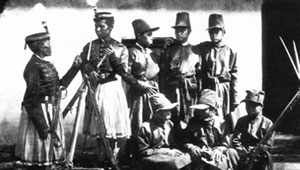
Uniform of the Royal Guard Corps (Kholan Department)
Image Source: Historical Image Collection of the Reign of King Mongkut (Rama IV). Bangkok: Fine Arts Department, 2005, p. 134.
Chief Administrator of the Inner Court Affairs
During the reign of King Rama V, there was a strong royal preference for traditional Thai floral arrangements. At any royal ceremony, the royal ladies were expected to compete in presenting floral decorations for use in the event. The elder royal sister, Princess Somanassiriratana (Krom Luang Samorratanasirithet), who held the position of Chief Administrator of the Inner Court, was highly skilled in floral arrangement. Her expertise in crafting floral hangings and garlands became renowned in the field of floral craftsmanship to this day.
She frequently supervised the ladies of the inner court in preparing flower arrangements for royal ceremonial platforms, palace gates, and windows of royal residences. In addition to preserving the traditional forms of floral crafting, she also introduced innovative designs. Traditionally, flowers were strung in mesh patterns, loops, or arranged on wooden frames covered with white cloth—following standard templates such as ban-dai kaew (crystal staircases), phu klin, klin khwam, klin ta-khaeng, and klin jeen (various traditional flower designs).
However, Princess Somanassiriratana modernized the practice by using white wire frames and inventing more elaborate and imaginative floral forms, such as ra-ya plaeng (transformed garlands), phuang kaew (crystal clusters), and redesigned the traditional ban-dai kaew into figures like Indra’s heavenly palace or celestial thrones. Her innovations significantly advanced the art of Thai floral decoration.
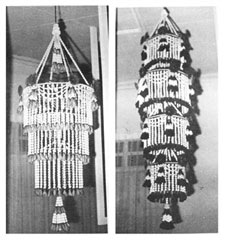

Rayaplaeng (Transformed Garland) and Phuang Kaew (Crystal Garland)
Image source: Maneerat Chantanaphalin. Kruang Khwaen Thai: Dok Mai Sod (Thai Hanging Ornaments: Fresh Flowers). Bangkok: Amarin Printing, 1985, p. 25.
Her Royal Highness Princess Kom Luang Sommaratnasilachet and King Mongkut’s University of Technology Thonburi (KMUTT)
Her Royal Highness Princess Kom Luang Sommaratnasilachet was granted land in Ratchaburana Subdistrict on December 6, R.S. 123 (corresponding to 1904 CE). The land was registered as Plot No. 108, Title Deed No. 1286, with an area of 256 rai, 1 ngan, and 96 square wah.
In November 1959, a project to establish a new technical college to meet the government’s growing demand for technical personnel was approved. During the search for a suitable location, Director-General Sanan Sumit found that land belonging to the Crown Property Bureau in the Bangmod Subdistrict—32 rai leased by the Department of Vocational Education—had already been developed. It housed a standard-design two-story wooden school building with 14 classrooms, completed in 1958, along with a principal’s residence and half a canteen, though it had remained unused due to a lack of road access, electricity, water, and telephone service. However, since the infrastructure was otherwise ready, this land was proposed as the new site for the college.
The Ministry of Education officially established the institution under the name “Thonburi Technical College” on February 4, 1960, under the Department of Vocational Education. During the preparation phase to launch the school year, Director Prapa Prajaksubanit of Thonburi Technical College foresaw that 32 rai would not be sufficient for future expansion. He therefore proposed to the Department of Vocational Education that the campus be expanded by an additional 99 rai, 2 ngan, and 79 square wah. This additional land originally belonged to Her Royal Highness Princess Kom Luang Sommaratnasilachet.
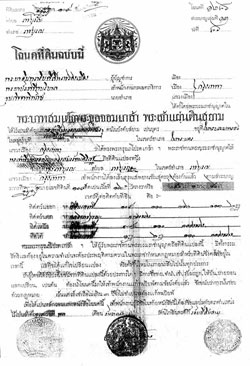
Copy of Land Title Deed No. 108, Deed No. 1286, Ratchaburana Subdistrict
Source: Crown Property Bureau
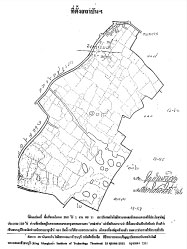
The land area currently utilized by King Mongkut’s University of Technology Thonburi (KMUTT), as specified in the land title deed, is 134 rai, 2 ngan, and 36 square wah.
Source: King Mongkut’s Institute of Technology Thonburi. Phra Bat Somdet Phra Chom Klao Chao Yu Hua. Bangkok: The Institute, 1994, p. 211.
King Mongkut’s University of Technology Thonburi (KMUTT) was established from Thonburi Technical College and is situated on land plot No. 108, Title Deed No. 1286, covering an area of 134 rai, 2 ngan, and 36 square wah. The land belongs to the Crown Property Bureau and was transferred in name from its original owner, Prince Krom Luang Samorratana Siri Chet (กรมหลวงสมรรัตนสิริเชษฐ), who passed away on May 5, 1931 (B.E. 2474) without leaving any heirs.
The Crown Property Bureau officially assumed ownership on October 17, 1980 (B.E. 2523). The remaining area of the land, apart from the university, now serves as the location of the Chalerm Phrakiat Youth Center and the Atorn Sangkhawat Vocational Training School under Bangkok Metropolitan Administration.
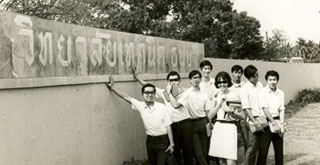
Wan Wan… Thonburi Technical College
Image Source: Information Resource Center Archives
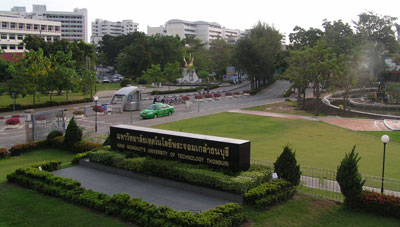
Today… King Mongkut’s University of Technology Thonburi
Photographed by: Mr. Worathat Boonkai
Image Source: Information Resource Center Archives
Bibliography
Faces of History: Siamese Royal Court Series. Bangkok: Siam Publishing House, 1973.
Damrong Rajanubhab, H.R.H. Prince. Memories. Bangkok: Social Science Association of Thailand Press, 1962.
Thiphakorawong Maha Kosathibodi (Kham Bunnag), Chao Phraya. Royal Chronicles of Rattanakosin Reign IV, 6th ed. Bangkok: Amarin Printing & Publishing, 2005.
Chantrangsu, Thongthong. Inside the Palace Walls, 2nd ed. Bangkok: S.C. Print & Pack, 2007.
Sakdisak, M.R. Naengnoi. The Abhinaon Niwet Palace: A Royal Residence of King Mongkut, Bangkok: Matichon, 2006.
Banjerd Intuchantriyong. In Honor of the Chakri Dynasty. Bangkok: Paritathat Press, 1982.
Prayut Sittiphan. Following the Footsteps of King Chulalongkorn. Bangkok: Siam Publishing House, 1971.
Father of Thai Medicine. Bangkok: Princess Srinagarindra’s Volunteer Doctors Foundation, 1983.
Convocation Ceremony, King Mongkut’s Institute of Technology Thonburi: October 18, 1988. Bangkok: KMITT, 1988.
Diskul, M.C. Phunphitsamai. What I Have Witnessed, 2nd ed. Bangkok: Media Focus, 1991.
Finestone, Jeffrey. Photobook of the Royal Children and Grandchildren of King Mongkut (Rama IV). Bangkok: Loma Holding, 2000.
Manee Rat Chantanaphalin. Thai Floral Hangings: Fresh Flowers. Bangkok: Suan Dusit Teachers’ College, 1985.
Moffat, Abbot Low. The Kingdom of Mongkut. Bangkok: Social Science Association Press, 1977.
Vachirunhis, H.R.H. Prince. Daily Journal of H.R.H. Prince Maha Vajirunhis, 3rd ed. Bangkok: Sukhothai Thammathirat Open University, 2000.
Wiboon Wichitwathakan. The Kingdom of Mongkut. Bangkok: Srangsan Books, 2001.
Wenisa Seniwong. Old Photos of Royalty in the Era of King Rama V. Bangkok: Bangkok Books, 2003.
Sansanee Veerasinschai. Children of the Lords: Behind the Success in the Royal Court. Bangkok: Matichon, 2003.
King Mongkut’s Institute of Technology Thonburi. King Mongkut. Bangkok: KMITT, 1994.
Photographic Chronicle of the Sons and Daughters of King Chulalongkorn: The Royal Youth Lineage. Bangkok: Department of Fine Arts, 2009.
Aim-on Srinilta. “Land Utilization,” in 30 Years of King Mongkut’s Institute of Technology Thonburi: 1960–1990. Bangkok: KMITT, 1990.

